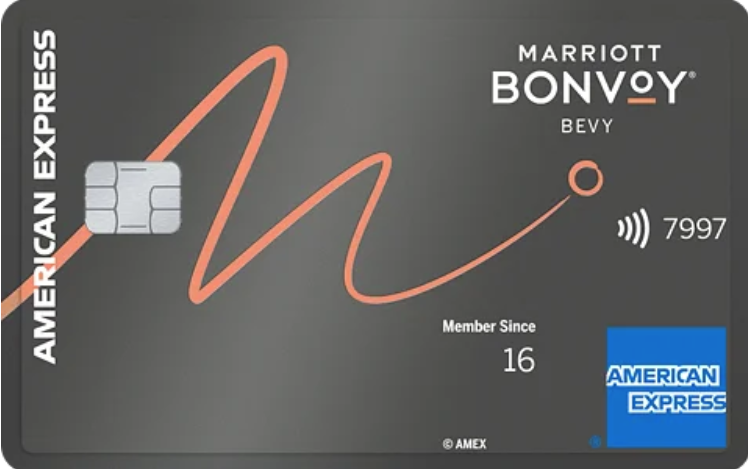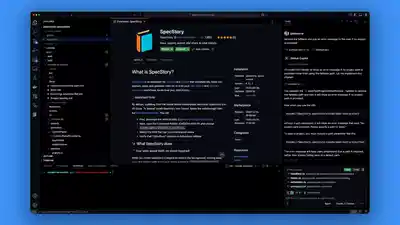Dunning Emails – Definition, Examples, Best Practices, and Automation Tools
What are dunning emails? Definition Dunning refers to the process of contacting customers to collect overdue payments. Historically, the term implied aggressive debt collection tactics (even dating back to sending 17th-century debt collectors). In modern usage, especially for subscription and SaaS businesses, dunning is a gentler, automated process of notifying customers about failed or overdue payments in an attempt to recover revenue and prevent churn. A dunning notice typically means a written communication informing a customer their account is past due. Dunning emails in SaaS For SaaS companies, dunning usually takes the form of a series of transactional email reminders when a recurring payment fails (due to an expired card, insufficient funds, etc.). Instead of threatening legal action, SaaS dunning emails focus on gently nudging the customer to update their payment information and avoid service interruption. The goal is to address involuntary churn – when customers unintentionally churn because their payment couldn’t be processed. In numbers: Involuntary churn can account for 20–40% of total churn, making it a major source of lost subscriptions. SaaS companies typically lose 1–5% of MRR each month due to failed payments. With well-optimized recovery systems, up to 70–80% of failed payments can be recovered. That’s why a solid dunning process is critical for SaaS revenue retention – it can make the difference between quietly bleeding revenue and keeping paying customers on board. A dunning email is essentially a payment failure notice sent to the customer, often including details of the issue and instructions to resolve it. These emails typically contain account or invoice information, explain the problem (e.g. “your card was declined”), and prompt the user to take action (update their card, retry payment, etc.). Importantly, they are transactional emails, not marketing messages, so they don’t require unsubscribe links and are expected by the customer as part of the service process. You can read more in an article covering specifics of transactional vs marketing emails. In summary, dunning emails in SaaS are friendly but urgent payment reminders triggered by failed charges. They inform the customer of the payment issue and its consequences, and guide them to fix it – all in a way that preserves the customer relationship and keeps them using the service. The dunning email process in SaaS When a recurring payment fails, SaaS businesses usually initiate a dunning process – a sequence of communications aiming to collect the payment. Unlike a single overdue notice, a dunning process involves multiple touchpoints over a period of days or weeks until the issue is resolved or the account is canceled. The process generally looks like this: Trigger: A payment attempt is declined (common causes include expired credit card, insufficient funds, or bank processing error). This failure triggers the first dunning email. Sequence of emails: Rather than relying on one email, companies typically send a dunning email sequence (usually 3–4 emails) at set intervals. Each email escalates urgency slightly. The first email goes out immediately when the payment fails, politely notifying the customer and requesting action within a certain timeframe. If the payment isn’t fixed, follow-up emails are sent after subsequent failed retry attempts. Payment retries: In between emails, the billing system will often automatically retry the charge after a few days. For example, a business might retry the card 3 days after the first failure, and again 5 days later, etc. If a retry succeeds, the dunning sequence stops. If not, the next email in the sequence is sent. Resolution or cancellation: The dunning process continues until the payment is recovered or a final attempt fails. If after the final reminder the customer hasn’t updated their info, the account may be suspended or canceled due to non-payment (ending the service). Tips on dunning emails Successful SaaS companies put a lot of thought into their dunning emails’ tone, content, and design. Here are some insights and examples from real brands: Friendly, on-brand subject lines: The email subject is crucial for getting the customer’s attention. Companies tailor subject lines to match their brand voice while conveying urgency. For example: Oh no, your payment failed Action required – please update your payment details We couldn’t process your payment Your Product payment didn’t go through Clear body message: The body of a dunning email usually: States what happened (e.g., “Your last payment for Product failed”). Explains why if known or lists common reasons (expired card, insufficient funds, etc.) Tells the customer what to do next (update their card on file, retry payment, or contact support). Mentions when the next charge attempt will happen or deadline to fix (e.g., “we’ll retry on Sept 5” or “please update

What are dunning emails? Definition
Dunning refers to the process of contacting customers to collect overdue payments. Historically, the term implied aggressive debt collection tactics (even dating back to sending 17th-century debt collectors). In modern usage, especially for subscription and SaaS businesses, dunning is a gentler, automated process of notifying customers about failed or overdue payments in an attempt to recover revenue and prevent churn. A dunning notice typically means a written communication informing a customer their account is past due.
Dunning emails in SaaS
For SaaS companies, dunning usually takes the form of a series of transactional email reminders when a recurring payment fails (due to an expired card, insufficient funds, etc.). Instead of threatening legal action, SaaS dunning emails focus on gently nudging the customer to update their payment information and avoid service interruption.
The goal is to address involuntary churn – when customers unintentionally churn because their payment couldn’t be processed.
In numbers:
Involuntary churn can account for 20–40% of total churn, making it a major source of lost subscriptions.
SaaS companies typically lose 1–5% of MRR each month due to failed payments.
With well-optimized recovery systems, up to 70–80% of failed payments can be recovered.
That’s why a solid dunning process is critical for SaaS revenue retention – it can make the difference between quietly bleeding revenue and keeping paying customers on board.
A dunning email is essentially a payment failure notice sent to the customer, often including details of the issue and instructions to resolve it. These emails typically contain account or invoice information, explain the problem (e.g. “your card was declined”), and prompt the user to take action (update their card, retry payment, etc.). Importantly, they are transactional emails, not marketing messages, so they don’t require unsubscribe links and are expected by the customer as part of the service process. You can read more in an article covering specifics of transactional vs marketing emails.
In summary, dunning emails in SaaS are friendly but urgent payment reminders triggered by failed charges. They inform the customer of the payment issue and its consequences, and guide them to fix it – all in a way that preserves the customer relationship and keeps them using the service.
The dunning email process in SaaS
When a recurring payment fails, SaaS businesses usually initiate a dunning process – a sequence of communications aiming to collect the payment. Unlike a single overdue notice, a dunning process involves multiple touchpoints over a period of days or weeks until the issue is resolved or the account is canceled. The process generally looks like this:
Trigger: A payment attempt is declined (common causes include expired credit card, insufficient funds, or bank processing error). This failure triggers the first dunning email.
Sequence of emails: Rather than relying on one email, companies typically send a dunning email sequence (usually 3–4 emails) at set intervals. Each email escalates urgency slightly. The first email goes out immediately when the payment fails, politely notifying the customer and requesting action within a certain timeframe. If the payment isn’t fixed, follow-up emails are sent after subsequent failed retry attempts.
Payment retries: In between emails, the billing system will often automatically retry the charge after a few days. For example, a business might retry the card 3 days after the first failure, and again 5 days later, etc. If a retry succeeds, the dunning sequence stops. If not, the next email in the sequence is sent.
Resolution or cancellation: The dunning process continues until the payment is recovered or a final attempt fails. If after the final reminder the customer hasn’t updated their info, the account may be suspended or canceled due to non-payment (ending the service).
Tips on dunning emails
Successful SaaS companies put a lot of thought into their dunning emails’ tone, content, and design. Here are some insights and examples from real brands:
-
Friendly, on-brand subject lines: The email subject is crucial for getting the customer’s attention. Companies tailor subject lines to match their brand voice while conveying urgency. For example:
- Oh no, your payment failed
- Action required – please update your payment details
- We couldn’t process your payment
- Your Product payment didn’t go through
-
Clear body message: The body of a dunning email usually:
- States what happened (e.g., “Your last payment for Product failed”).
- Explains why if known or lists common reasons (expired card, insufficient funds, etc.)
- Tells the customer what to do next (update their card on file, retry payment, or contact support).
- Mentions when the next charge attempt will happen or deadline to fix (e.g., “we’ll retry on Sept 5” or “please update within 3 days to avoid interruption”)
- Provides a direct link or button to update payment details (a clear Call-to-Action).
- Offers help via support channels for any questions or issues.
Tone and customer relationship: Successful dunning emails use empathy and helpful language, reinforcing that the business values the customer and just wants to ensure they can continue their service. For instance, rather than saying “you failed to pay,” they might say “we couldn’t process your payment” – focusing on the issue, not blame. This approach can even turn a potentially negative event into an opportunity to build trust by showing concern for the customer’s access to the product
Including consequences (gently): Dunning emails often remind customers what will happen if they don’t take action, but framed in a helpful way. By giving a clear deadline or consequence, it creates urgency, but it’s usually phrased as “we don’t want you to lose access, so please...” rather than a threat.
Support option: Some companies include additional contact options in their dunning emails to ensure customers feel supported, giving them the choice to either update their payment details on their own or reach out to support for help. For example: “Need assistance? Our team is here to help 24/7”.
Tone differences by brand: There is no one-size-fits-all template; companies adapt to their audience. The key is to remain polite and professional, even as reminders get more urgent. Early notices assume the failure is an oversight and maintain a “we’re in this together” feel. Later notices can be firmer but should still strike a tone of professionalism and care.
Clean visual design: Dunning emails can be plain text or designed HTML, but many SaaS brands use a simple template with branding. The design typically highlights the key message and CTA. For instance, an example from Sidemail.io’s template library shows a concise email with a clear headline and a bright action button:
To wrap up, effective dunning emails are concise, actionable, and customer-centric. They remind the customer of the issue, provide an easy path to resolution, and communicate the urgency without making the customer feel pressured.
Sample dunning email templates
Below are sample templates for a dunning email sequence. These can serve as a starting point and should be customized to fit your product’s tone and specifics.
The templates incorporate several best practices: clear subject lines, an explanation of the issue, a call-to-action button or link, a sense of urgency, and a helpful tone. In template #1, the tone is light and assumes the best (the issue can be fixed easily). By template #3, the tone is more serious and time-sensitive, clearly stating the consequence (suspension) while still offering help. You can adjust the timing and wording to match your business.
Template 1: Friendly First Reminder (Day 0)
Subject: “Uh-oh, we couldn’t process your payment”
Hello {name},
We attempted to process your recent payment for {product}, but unfortunately it didn’t go through. This might happen if a card expired or there were insufficient funds. No worries – we’ll try charging your card again in a few days.
In the meantime, please update your billing information at the link below to ensure your subscription remains active:
Update payment details [button]
And if you need any help, just reply to this email or contact our support team. We’re here to assist!
Thank you,
The {product} Team
Template 2: Second Attempt Reminder (Day 3)
Subject: “Important: Please update your payment details for {product}”
Hi {name},
We just tried to bill your {product} subscription again, but the payment still didn’t succeed. To avoid any interruption in your service, please take a moment to update your payment information.
Update payment details [button]
Need help? Feel free to reach out by replying to this email – our team is ready to help.
Thank you, The {product} Team
Template 3: Final Notice (Day 7 or Final Attempt)
Subject: “Final Notice: Your {product} subscription is at risk”
Hello {name},
This is a final reminder that we’ve been unable to process your payment for {product} despite multiple attempts.
Please update your billing information immediately to continue your subscription without interruption:
Update payment details [button]
If the payment issue isn’t resolved, your account will be automatically paused on {date}.
We sincerely value you as a customer and want to help you continue using {product}. If you have any questions or need assistance updating your info, please reply to this email or contact our support at {support-email}.
Thank you,
The {product} Team
Tools and software for automated dunning
Managing dunning manually can be tedious and prone to error, especially as you scale. Fortunately, there are many tools to help automate the dunning process. These range from full billing systems with built-in dunning workflows to specialized add-ons and email services. Automating dunning ensures timely, consistent follow-ups and frees your team from chasing payments one by one.
Billing platforms with dunning features
Many subscription billing or payment platforms include dunning management out-of-the-box. For example, Stripe (a popular payment processor) can be configured to send automatic payment failure emails and retry charges on a schedule. However, Stripe’s native dunning features are somewhat basic and not highly customizable.
Dedicated email platforms
Another effective approach is to use an email platform built specifically for SaaS communication. These tools make it easy to design and send dunning emails triggered by your app or billing system. Platforms like Sidemail let you create automated email sequences and trigger them via API or webhook when specific events occur – such as a failed payment.
Many of these platforms include pre-built templates and offer the flexibility to handle both transactional and marketing emails.
Below, we’ll take a closer look at Sidemail as a case study as it’s an example of a modern email platform well-suited for handling dunning emails in a SaaS context.
Sidemail.io combines a transactional email API, marketing and newsletter tools, and automation workflows into one streamlined service—making it especially well-suited for startups and SaaS applications. Key benefits of Sidemail for dunning emails:
Pre-built dunning email templates: Sidemail provides ready-made email templates, including templates out of the box. Templates are mobile-responsive, work in all email clients, supports dark mode, and are fully customizable – so you can match your brand and tone with ease.
No-code email editor: With Sidemail’s visual editor, you can modify email templates without needing to code HTML.
Fast and reliable email delivery: For dunning emails, deliverability is crucial (a dunning email that goes to spam won’t get your customer back!). Sidemail is reliable solution that ensures the highest delivery standards and fastest email delivery on the market.
Contact management and Stripe integration: Sidemail includes light CRM features like contact profiles, subscription forms, and importantly a Stripe integration. If you use Stripe for billing, Sidemail can “plug’n’play” with it.
Multiple email types in one platform: Sidemail isn’t just for dunning. You can also manage welcome emails, password resets, newsletters, product updates, and more – all from the same platform. This simplifies the tech stack and helps maintain a consistent brand voice and design across all touchpoints.
Other tools: Aside from Sidemail, there are alternatives depending on your needs:
If you already use a customer engagement platform like Intercom or Customer.io, you might integrate failed payment events there and use their messaging capabilities.
Also there are available dedicated churn-focused tooling like Paddle or Churn Buster, though some of these extend into broader spectrums.
Some companies even use generic automation tools: for example, sending a Slack notification to the sales/support team on final failure so they can personally reach out to save an account (not automated email, but a human touch in the loop).
Conclusion
Dunning emails might not be the most glamorous part of running a SaaS, but they are undeniably important. A well-executed dunning strategy means more recovered revenue, lower involuntary churn, and happier customers who don’t suddenly find their service cut off.
Key takeaways: always communicate clearly and promptly when a payment issue occurs, be persistent but polite in following up, and use the right tools to automate and optimize the process. Whether you leverage your billing platform’s built-in features or integrate a dedicated solution like Sidemail, make sure the process is efficient and aligned with your company’s tone and customer experience standards.
In practice, successful SaaS companies treat dunning emails as an extension of customer service. They use them not only to get paid, but to remind customers that the company cares about keeping them on board. With the examples, templates, and best practices outlined above, you should be well-equipped to manage your dunning process effectively – turning failed payments back into active subscriptions with minimal friction.








































































